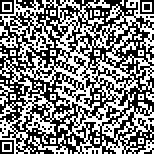| 摘要: |
| 谷胱甘肽S转移酶(Glutathione S-transferase, GST)因对环境污染反应灵敏, 且具有降解毒物、抗氧化等作用常被作为水体污染的指示分子; 厚壳贻贝对环境污染物具有很强的耐受性, 是重要的海洋环境污染监测生物, 因此研究厚壳贻贝GST分子及其表达特征, 对正确使用其进行海洋环境污染预警具有重要价值。本文通过同源克隆法获得厚壳贻贝GST部分序列(Gene Bank 序列号为KC176684), 经序列比对和系统进化分析初步推断所得到的GST基因为pi型。鉴于铜和镉是目前海
水中主要的重金属污染源, 进一步利用实时荧光定量PCR技术检测铜和镉胁迫后GST在厚壳贻贝血液中的表达水平, 结果显示铜(Cu2+浓度为20μg/L)和镉(Cd2+浓度为200μg/L)胁迫均造成GST高水平表达, 但最高表达量出现的时间略有差别, Cu2+出现在刺激后第10 d, 表达量为对照组的6.95倍, Cd2+则出现在第15 d, 约为对照组的6.11倍, 说明GST参与了厚壳贻贝重金属的解毒过程, 且对于不同重金属胁迫的解毒能力稍有不同。鉴于厚壳贻贝GST对重金属刺激的敏感作用, 可将其作为海水养殖环境污染监测的生物指示基因。 |
| 关键词: 厚壳贻贝 谷胱甘肽S-转移酶(GST) 重金属胁迫 表达分析 |
| DOI:10.11693/hyhz20121204002 |
| 分类号: |
| 基金项目:国家科技支撑计划, 2011BAD13B08号; 国家星火计划项目, 2012GA700111号; 浙江省海洋与渔业项目, 浙海渔计(2012)83号。 |
|
| MOLECULAR EXPRESSION PATTERN OF GLUTATHIONE S-TRANSFERASE GENE IN MYTILUS CORUSCUS EXPOSED TO HEAVY METALS |
|
Liu Huihui
|
|
Zhejiang Ocean University
|
| Abstract: |
| Glutathione S-transferases (GSTs) are important members in the superfamily of phase II detoxification enzymes for playing crucial roles in immune and metabolic processes of vertebrates and invertebrates. They are often used as water pollution indicators for their sensitive reactions to environmental pollutants. Mytilus coruscus, an important aquatic shellfish of high economic value, is widely culturedin the East China Sea, especially in Zhoushan Islands. Meanwhile, they are frequently used as a biomonitoring species in quick response to pollution. Therefore, the expression of GST from M. Coruscushas been regarded as a crucial biomarker to environmental pollution. Partial cDNA sequence of GST was cloned from M. Coruscus (GenBank accession no: KC176684). Based on multiple sequence alignment and phylogenetic analysis, the sequence belonged to pi-class GSTs. Copper and cadmium are currently common pollutants in the ocean. The GST mRNA expression of hemocyte in M. Coruscuswere tested by SYBR Green quantitative RT-PCR afterbeing stressed by Cu2+(20 μg/L) and Cd2+(200 μg/L). The mRNA expression was found time-dependent and up-regulated, and the maximum expression of copper treat group was 6.95-fold than that of control at 10 d; but the cadmium treat group appeared at 15d with 6.11-fold than the control. The results show that GST of Mytilus coruscustook a part in heavy metal detoxification with different ability against disparate heavy metal stresses. The expression of GST in M. Coruscuscould be a potential biomarker to monitor environmental contaminants. |
| Key words: Mytilus coruscus Glutathione S-transferase (GST) heavy metals stress expression analysis |
